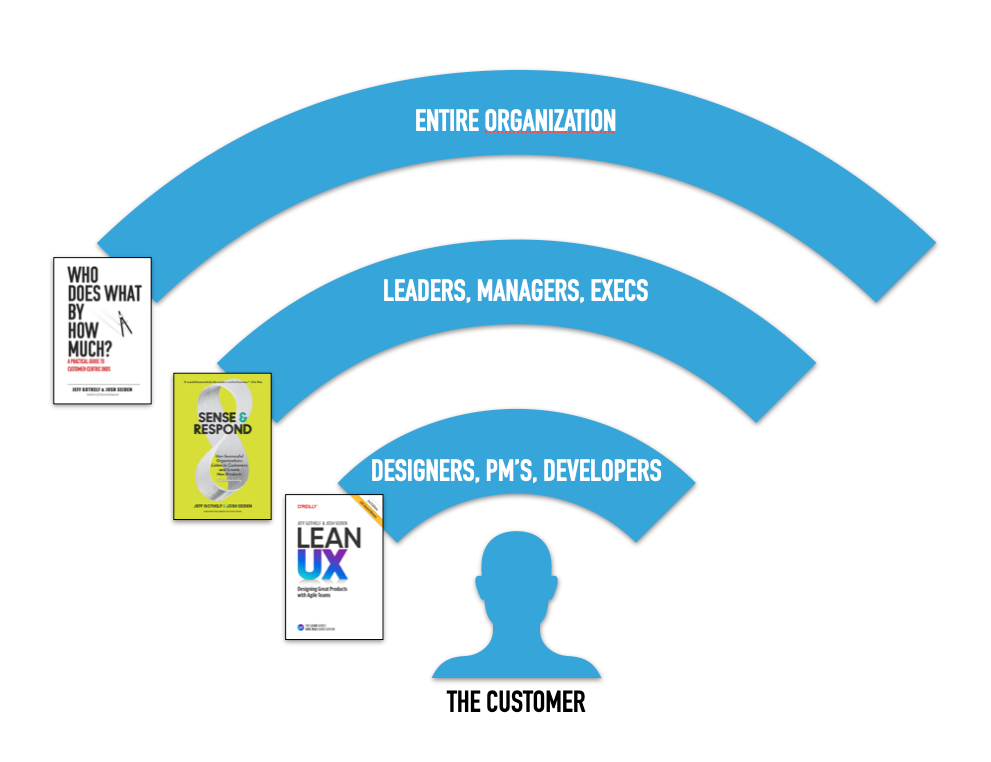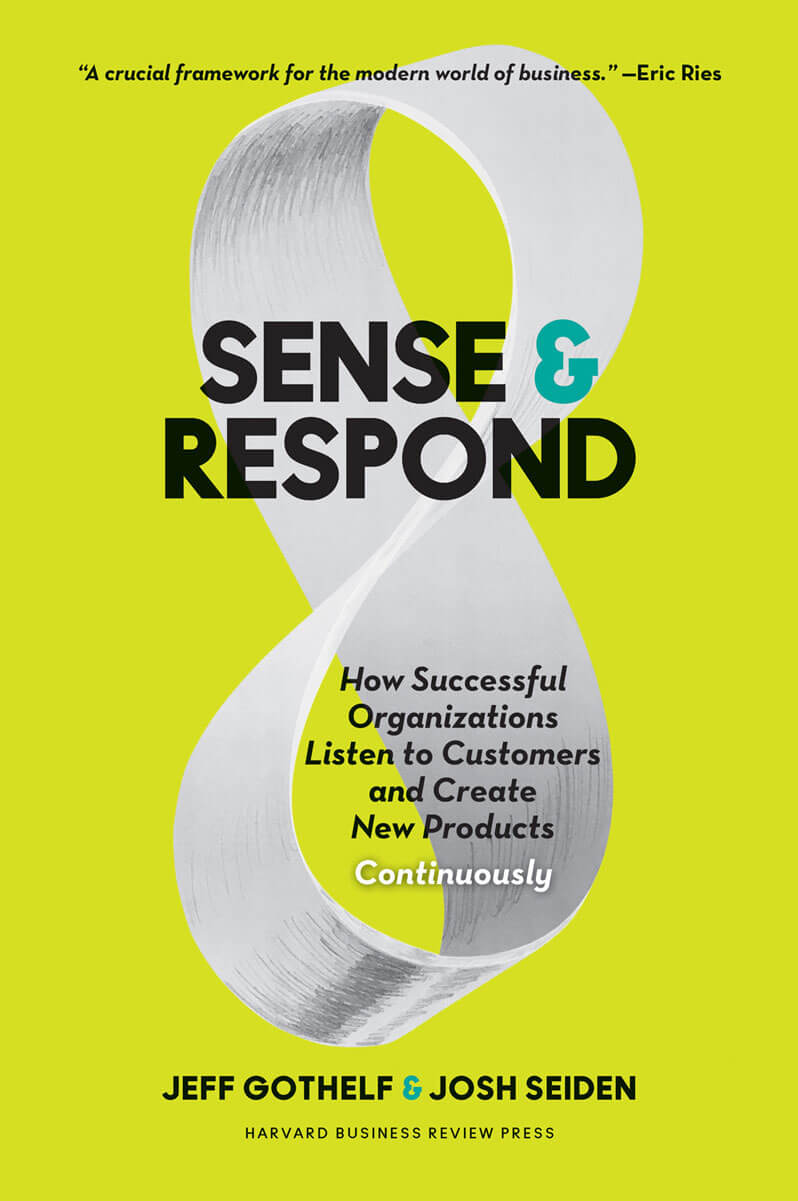In a recent LinkedIn comment someone noted that it wasn’t immediately obvious how the material in our books (the 3 books I’ve co-written with Josh Seiden) is related and how that lack of connection, potentially reduced the depth and value of the material in those books. My first reaction was, “The commenter should read the books first.” (because we very clearly note exactly how each of them are related to each other). My second reaction was to write this blog post. The arc of product design, management and development is long and it bends towards customer-centricity. Let’s dive in.
Three books, three flight levels
The three books I’m going to focus on are Lean UX, Sense & Respond and Who does what by how much?. I’ll start with the oldest of the books. Lean UX launched in March 2013 though Josh and I had been doing the work both in practice and on the manuscript for years at that point. We were designers and design managers at that time struggling with the sudden and rapid onset of Agile software development. Agile didn’t speak to design as a part of the product development process. As company after company adopted Agile designers were left on the side trying to figure out where and how they fit into this new way of working. Lean UX provided an answer to that question. It wasn’t the only answer necessarily but, based on our years of practical experience and trial and error we had found a way to ensure great, customer-centric design made its way into every sprint. As the years went on, the 2nd and 3rd editions of the book broadened the scope of the conversation to include product managers and engineers explicitly and to accommodate for changing technologies and distributed teams.
Teams loved Lean UX. The book has sold over 100,000 copies and is translated into nearly 10 languages. With that kind of exposure came a lot of feedback, most of it positive. The overwhelming theme that echoed from all over the world was this, “We’d love to put these ideas into practice but our company doesn’t work this way. Worse, my boss doesn’t let us do this work.” Never ones to ignore reader (customer?) feedback, Josh and I set out to speak to leaders and aspiring leaders about the digital transformation of business. Sense & Respond was published in March 2017. It was divided into two halves. The first half of the book makes the case that every business of scale or that seeks to scale is a software-based business. The second half argued for a new way of managing companies that are based in technology. The core thesis was that the continuous nature of software enabled a continuous conversation with the people our business serves. This provides an infinite inbound stream of evidence for us to use as we decide what to build, how to design it and through what channel to deliver it. We believed that if leaders understood this, it would make implementing practices like product discovery, design thinking and Lean UX much easier for teams. All of this would result in products and services that met the needs of our customers more effectively.
Sense & Respond did well as our next step up in level from the tactical to the strategic. Still, we kept bumping up against one last obstacle – goals. No matter how much we argued for a customer-centric, iterative approach to product design and development, nearly all of our clients were incentivized to deliver output – to make a thing, rather than positively impact customer behavior. No new way of working (Lean, Agile, Design Thinking, et al) was going to truly transform a company if goals weren’t aligned with customer needs. The OKR conversation had already taken root with John Doerr’s, Measure what matters, and Christina Wodtke’s, Radical Focus. Organizations were taken with Doerr’s idea that they could “be like Google and Bono” and saw the value of it in Wodtke’s business fiction fable of team-level OKR implementation. The at-scale, tactical implementation of Objectives and Key Results in a way that enabled the ideas of Sense & Respond and Lean UX to work successfully wasn’t explained anywhere. And so, Who does what by how much? was born. Our hypothesis was that if we could take advantage of companies’ attention on OKRs and explain this goal-setting framework in a way that demanded outcomes – measurable changes in human behavior – as the definition of success we would finally be able to have the top-down connection between goals, leadership techniques and team-level execution frameworks that ensure both customer-centricity and excellent product development and design.
Backing our way to the top
This has been a 15 year journey – since I started leading design teams – in practicing the craft, consulting and coaching teams and collecting the stories needed to connect the dots from goal-setting to individual level execution. We just didn’t start at the top. We started with the tactical tools and backed our way out and up, over many years, jobs and clients, to goal-setting and incentives. In my (perhaps not so humble) opinion, any leader would be greatly served by reading all three of our books. Taken as a series they paint a very detailed and practical picture of how to serve your customers’ ever-changing needs, take advantage of today’s incredible software development tools and ensure everyone on your teams contributes to their fullest capability.
What do you think? Do you see that thread in all 3 books? If you’ve read all three, I’d love to hear your thoughts in the comments.





